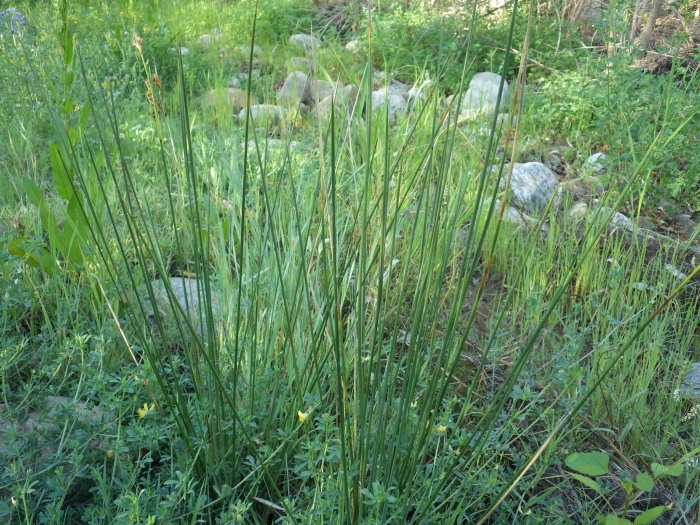Baltic Rush
(Juncus balticus)
Baltic Rush (Juncus balticus)
/
/

Zack Abbey
CC BY 4.0








































Estimated Native Range
Summary
Baltic rush is often used in restoration projects for wetland habitats and erosion control due to its extensive root system. It is suitable for planting in bioswales, rain gardens, and as a ground cover in appropriate wetland areas. It thrives in full sun to part shade, prefers moist to wet soils, and can tolerate a range of soil types, including sandy, loamy, and clay soils with poor drainage. While it is low-maintenance and hardy, it is important to be aware of its potential to spread aggressively, especially when planted outside its native range. Gardeners should consult local regulations as Juncus balticus can be invasive in some regions, such as parts of North America.CC BY-SA 4.0
Plant Description
- Plant Type: Grass
- Height: 1.5-3 feet
- Width: 0.5-1.5 feet
- Growth Rate: Rapid
- Flower Color: N/A
- Flowering Season: Spring, Summer
- Leaf Retention: Evergreen
Growth Requirements
- Sun: Full Sun, Part Shade
- Water: High
- Drainage: Slow, Standing
Common Uses
Bird Garden, Border Plant, Butterfly Garden, Deer Resistant, Edible*Disclaimer: Easyscape's listed plant edibility is for informational use. Always verify the safety and proper identification of any plant before consumption., Erosion Control, Low Maintenance, Street Planting, Water Garden
Natural Habitat
native to a variety of habitats including coastal dunes, salt marshes, and freshwater wetlands in northern Europe, including maritime areas of northern Britain, the Baltic region, and Scandinavia
Other Names
Common Names: Klit-Siv, Baltische Binse, Merivihvilä, Baltijas Donis, Sandsiv, Noordse Rus, Östersjötåg
Scientific Names: , Juncus balticus, Juncus arcticus var. balticus, Juncus arcticus var. montanus, Juncus balticus var. balticus, Juncus balticus f. contractus, Juncus balticus f. laxior, Juncus balticus subsp. monstrositas-spiralis, Juncus balticus var. tenuis,
GBIF Accepted Name: Juncus balticus Willd.